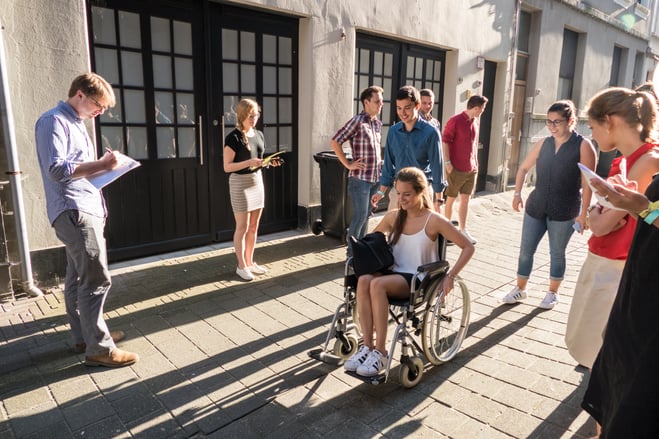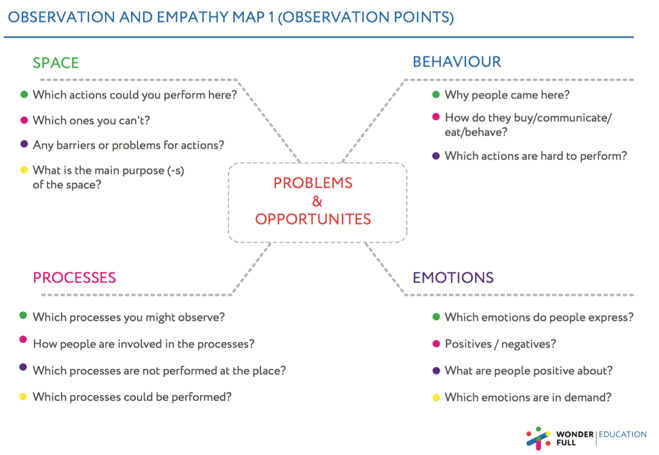Antwerp Management School recently welcomed some 250 full-time master students from all over the world. During the Onboarding Days, one of the things they were introduced to is Design Thinking. This concept offers a process-based and efficient way of dealing with complexity and finding solutions by setting aside traditional linear thinking and implementing new methods. Antwerp Management School regards Design Thinking as one of the key competences for future professionals and that is why it has been included in the curriculum for the new students: to form a new generation of ‘design thinkers’.
What is it exactly?
We live in a world where everything appears to be interconnected and we find it hard to understand the consequences of our actions and decisions within the complex context of our company. All too often, this leads to indecisiveness and inaction that makes us undergo reality instead of creating it. Handling complexity is something designers have done ever since the industrial revolution. Of old, designers are ‘specialised generalists’ who have come to accept the uncertainty of ‘not knowing everything’ and who develop methods that are always result-oriented in spite of the complex environment in which they are used.
The designer
A designer who is asked to design a coffee machine is not an expert in plastics and electricity and standards. Still, he manages to develop a marketable product and creates proven added value – he has a positive impact on the end result. Designing a service is even harder. Try designing a service for the civil affairs desk of a medium-sized town, where that single desk provides at least three hundred individual services. And that’s not even taking into account the most complex product-service combinations that must be taken to a highly diversified public using innovative business models.
The beginner
During their Onboarding Days, our new students went through the entire process of research and design – for the first time and in a single day. There were three different types of assignments, one of which was the ‘wheelchair assignment’.
|
I DON’T need help! To the roof of the MAS
What are the main drivers for a disabled student for choosing a meal or meal service? What problems does he encounter using public transport, and accessing public buildings? What frustrations and emotions does he/she have in the process?
|
Upon completing their study, the students convened in a prototyping session to come up with a product or service that would help the users solve the problem that was identified through research and empathy. The various solutions were then pitched back and forth. For instance, one of the proposed solutions for the wheelchair assignment was a ‘mobility app’, which would indicate not only the fastest and shortest route, but which also lists the wheelchair-friendliness of the various routes (‘the sidewalks are cluttered when the dustbins are out’) and rates public buildings. Another idea was the organization of a Wheelchair Awareness Day.
Design Thinking in the students’ own words

"I was introduced to Design Thinking during the Onboarding Days when we were asked to come up with a problem related to unhealthy eating habits among students. Naturally, we also looked for a solution, but in the words of Albert Einstein: “when I have one hour to solve a problem, I spend 55 minutes defining the problem and the last 5 to come up with a solution”. Design Thinking was not a new concept to me but it will still feature prominently in my master dissertation. You’re not looking for a conscious need but for subconscious desires. That is how you distinguish yourself and innovate."
- Kyra Koeken, Master of Innovation & Entrepeneurship





